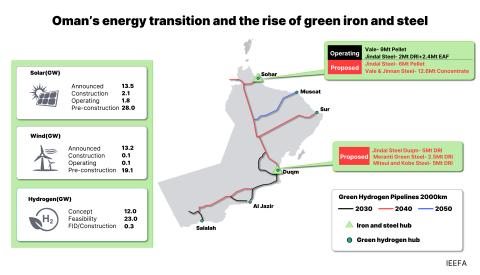To embrace a profitable energy future, Poland’s PGE must abandon plans for a new lignite mine
Download Full Report
Key Findings
PGE’s capital expenditures and acquisition investments have focused almost exclusively on coal and lignite (its conventional business) during the 2015-2018 period. More than three-quarters of the total PLN 37 billion invested to date went to coal and lignite, mostly at the expense of renewables, which received just 3% of the total.
Since PGE affirmed its commitment to its 2015-2020 strategy, on September 8 2016, shares have fallen by more than one-third.
PGE’s conventional business accounted for 46% of total EBITDA last year, down from 57% in 2015. The company needs to find a new growth engine beyond coal and lignite. Renewables accounted for 7% of EBITDA in 2018, and so PGE would have to grow this business more than six-fold to replace its conventional generation.
Executive Summary
This report reviews past, present and future strategies at PGE, Poland’s biggest electric utility, one of the most coal- and carbon-intensive energy companies in Europe. PGE is presently preparing a new strategy through 2030. We especially focus on the company’s iconic Bełchatów power plant, the world’s largest lignite power plant, Europe’s biggest power plant of any kind, and the continent’s biggest single source of carbon emissions. We consider PGE’s plans to develop a new lignite mine by 2030, at Złoczew, to fuel the Bełchatów power plant until the mid-2050s.
The context for this report is the extremely adverse and worsening environment facing coal and lignite power generation in Europe. Headwinds include EU climate targets and a Paris climate agreement that imply coal phaseout by around 2030 in developed countries; declining investor sentiment; falling costs of renewables; rising carbon prices; diminishing scope for financing and insuring coal; stricter EU air quality standards; and a trend toward mandated coal phaseouts. We expect utilities in Europe will cease coal and lignite power generation in the 2030s at the latest, either by mandate or market forces. The questions thus arise for PGE, why is it developing a new lignite mine, and what alternative businesses should it develop instead to replace falling conventional generation earnings going forward.
PGE is a 57% majority state-owned company in a country whose governments have been traditionally pro-coal. Coal and lignite in Poland are partly a social issue, employing more than 100,000 people. But the greater profitability of renewables, as illustrated in this report, shows that even in the near term there are no winners from doubling down on coal and lignite. Transitioning to renewables will mean a short-term cash outflow, but massive EU modernisation funds have been allocated to Poland so that the country does not have to bear this cost alone. We recommend that PGE actively pursue a stepwise retirement of lignite units at the Bełchatów power plant in favour of alternative electricity sources and industries. Scrapping its plans for the Złoczew mine is only the first step required in a new energy strategy that would also include accelerated investments in renewables.
Main Findings:
- PGE’s record PLN 37 billion (€8.5 billion) investments under its 2015-2020 strategy to date has damaged the company’s financial performance.
- Coal and lignite have accounted for 76% of this capex and acquisition investment. Renewables accounted for 3%. Coal and lignite earnings earnings before interest, tax and depreciation (EBITDA) have fallen year-on-year in the same period, while renewables EBITDA has risen. But we note that the introduction of Poland’s capacity market will boost the conventional segment from 2021-2025.
- PGE’s cost of equity has exceeded return on equity for at least the last four years, indicating that PGE has destroyed shareholder capital.
- PGE has performed terribly compared with selected European electric utilities that have tilted toward renewables.
- Since Denmark’s Ørsted listed in July 2016, after remodelling itself as a renewable energy company, PGE’s share price has trailed Ørsted by 197%, RWE by 157%, ENEL by 105%, and Iberdrola by 91%
- Germany’s RWE and Britain’s Drax provide case studies for how PGE might diversify into renewables. At present, PGE’s strategy beyond 2020 focuses on extending lignite and building new gas, while major renewables targets refer to 2025 and beyond.
- PGE has ample future land for ground-mounted solar at recultivated lignite mines. We analysed the cash flow impact of closing Bełchatów power plant’s three oldest units, cleaning up their share of the power plant and lignite mine, and developing ground-mounted solar and warehouse rental businesses, versus the alternative of continuing lignite generation for another five years.
- Lignite generation has a positive net present value (NPV) on a five-year time horizon through 2025, at these three units. In this case, we ignore future PLN 1 billion (€230 million, $249 million) lignite generation and mine decommissioning liabilities, tightening EU air quality standards, rising carbon prices, the end of capacity market payments and the vast expense of opening a new lignite mine at Złoczew. Five years is the investment horizon of distressed asset specialists presently buying ageing coal plants in Europe. PGE must look further into the future, for the sake of its multiple stakeholders.
- Our alternatives of ground-mounted solar and warehouse rental achieve similar earnings (EBITDA) as lignite, with zero subsidies, for decades into the future rather than a handful of years.
- Our alternatives also achieved a positive NPV, even after including the clean-up cost of the legacy of lignite mining and power generation, but only if PGE exploits grants available via the EU’s Modernisation Fund to develop low-carbon energy. The purpose of the fund is to help carbon-intensive regions diversify, and Poland will be by far the biggest beneficiary. We urge PGE to exploit it, to make this urgent change.
Press release: IEEFA update: Poland’s PGE should ditch plans for new lignite mine
Please view full report PDF for references and sources.















